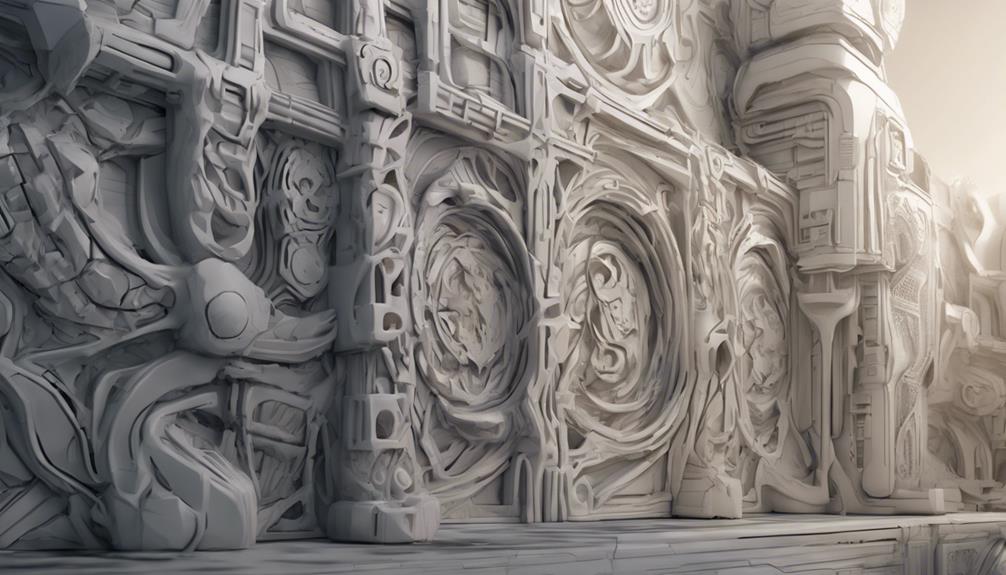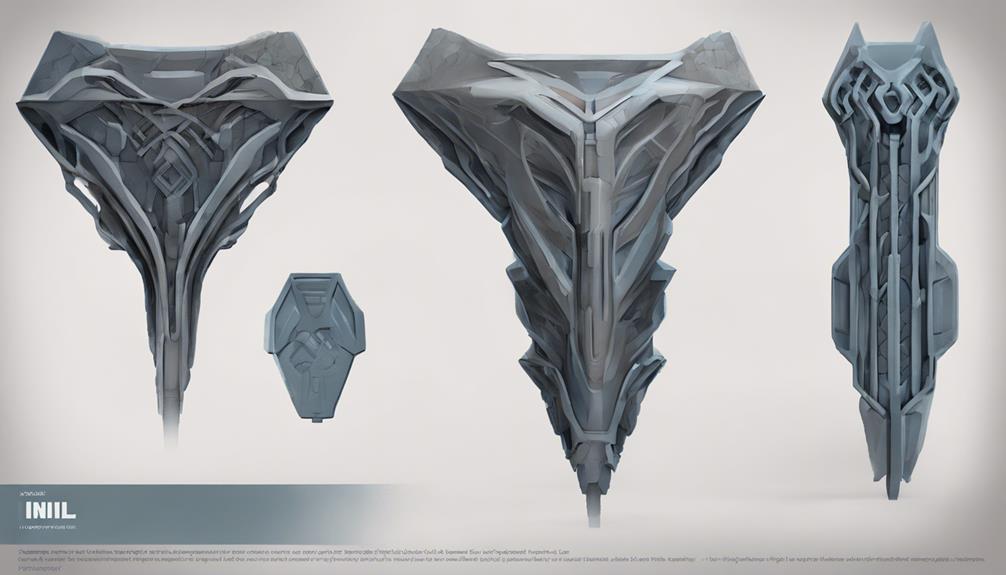Have you ever wondered if there are hidden techniques to enhance the strength of your 3D prints beyond the basics? By exploring advanced methods like optimizing design modifications and selecting the right slicer settings, you can take your prints to the next level of durability. Stay tuned to discover how these strategies can elevate the strength of your creations and open up a new world of possibilities in 3D printing.
Design Modification Strategies

To optimize the strength of your 3D prints, begin by implementing strategic design modifications. Start by analyzing stress points in your design to identify areas needing reinforcement.
Adjust the infill density in these high-stress zones to enhance overall strength. Increase the number of perimeters in critical sections to achieve the desired thickness and durability.
Consider adding internal structures to provide additional support where it's needed most. By reinforcing specific areas locally, you can maximize the strength-to-weight ratio of your prints.
Slicer Settings Impacting Strength
Slicer settings play an important role in determining the strength of your 3D prints by controlling factors such as printing orientation, temperature, and infill pattern. The printing orientation is essential for the overall strength of your print, as it affects how layers are stacked and bonded.
Adjusting wall thickness settings can greatly impact the strength of your prints by providing additional structural support. Moreover, the choice of infill pattern can influence the part's strength, with patterns like cubic or gyroid offering enhanced strength compared to others.
Optimization Techniques for Print Strength

Enhance the strength of your 3D prints by optimizing various print parameters to achieve maximum durability and performance. Adjust the print orientation to align with load-bearing directions, increasing the part's strength.
Vary the wall thickness or number of perimeters to reinforce specific areas as needed. Experiment with different infill patterns like cubic or gyroid for stronger prints. Fine-tune the infill density to balance strength and material usage.
Lower layer heights can compromise strength, so aim for a balance. Broaden the contact surface between layers to enhance adhesion. Guarantee proper extrusion width and flow rate for the best layer bonding.
Tailor printing temperature and speed to the filament type for improved print quality and strength.
Filament Selection for Enhanced Strength
For enhanced strength in your 3D prints, selecting the right filament is essential to achieving top durability and performance. When choosing a filament, consider the following:
- Use Stronger Filament: Opt for filaments like carbon fiber reinforced PLA or PETG for increased strength.
- Which Filament Resists the Outdoors?: Look for filaments with UV resistance like ASA or PETG for outdoor applications.
- Which Filament Resists Heat the Best?: Select high-temperature filaments such as ABS or nylon for parts exposed to heat stress.
These filament choices can significantly enhance the strength and durability of your 3D prints, making them suitable for a wide range of applications.
Tips for Print Strength Enhancement

When aiming to strengthen your 3D prints, optimizing various print parameters can greatly enhance the structural integrity and performance of your printed parts. Here are some tips to enhance the strength of your prints:
| Tip | Description |
|---|---|
| Consider Load Orientation | Align parts based on expected loads for best strength |
| Adjust Wall Width | Increase wall width or number of passes for strength |
| Select Strong Patterns | Choose patterns like cubic or gyroid for stronger prints |
Implementing these tips can greatly improve the durability and robustness of your 3D prints, ensuring they meet the demands of your specific applications.
Frequently Asked Questions
Can I Use Different Infill Patterns in the Same Print for Varied Strength?
Yes, you can use different infill patterns in the same print for varied strength. Experiment with varied patterns like honeycomb, grid, or gyroid in different sections to optimize strength based on the part's requirements.
How Does Print Speed Affect the Overall Strength of the Print?
Printing speed greatly impacts overall print strength. Faster speeds may compromise layer adhesion and lead to weaker parts. Slower speeds allow for better bonding between layers, enhancing the structural integrity of the print.
Which Filament Types Are Best for Impact Resistance in 3D Prints?
For impact resistance in 3D prints, choose filaments like ABS, PETG, and TPU. These materials offer durability and strength against impacts. Consider the specific needs of your project to select the most suitable filament type for excellent performance and resilience.
Does the Ambient Temperature Affect the Strength of the Final Print?
Does ambient temperature affect print strength? Absolutely! Temperature plays a significant role in the final outcome. It's important to take into account this factor for best results. Take control of the environment to guarantee the strength of your prints.
Is Post-Processing Necessary to Improve the Strength of 3D Prints?
Post-processing can enhance 3D print strength. Sanding, painting, or annealing can improve durability. Structural reinforcements like inserts or epoxy can add strength. Choose methods based on print material and desired outcome for maximum effectiveness.
Conclusion
To sum up, by implementing design modifications, adjusting slicer settings, optimizing print techniques, and selecting superior filaments, you can truly transform your 3D prints for maximum strength.
These strategies synergize to guarantee your prints are sturdy, reliable, and resilient, meeting the demands of various applications.
Embrace these tips for print perfection and produce powerful prints that will leave a lasting impact.